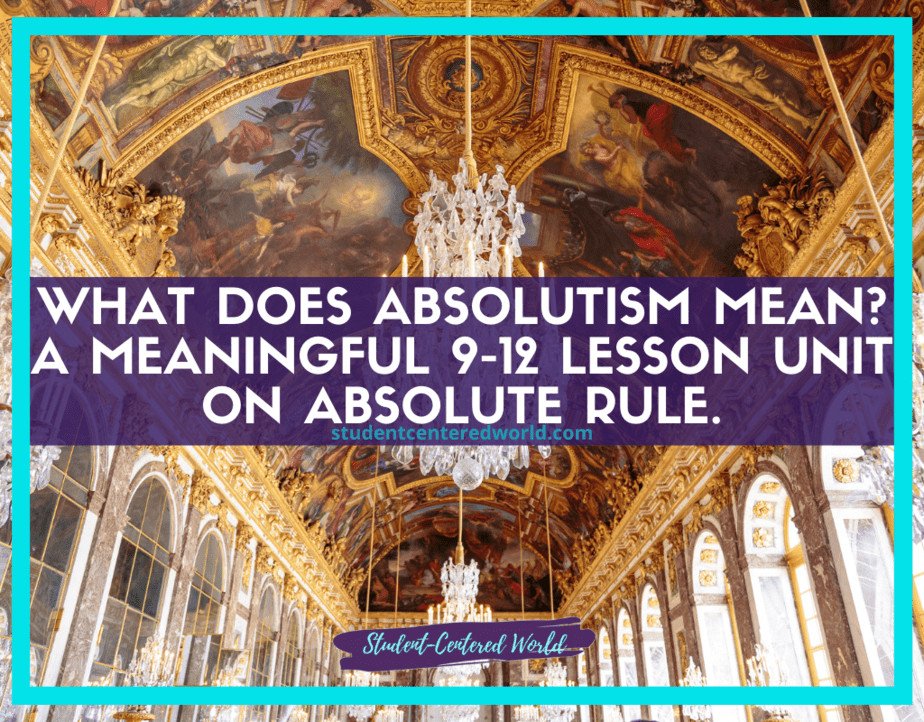Meaningful Lesson Plan on Civil Rights Movement
When teachers begin searching for a good lesson plan on Civil Rights Movement, so many variables come into play. It is such an important topic in American history that it should be given the appropriate amount of attention, but we all know we are within time constraints of our curriculums and there are only so many hours in a school year.
The best way to look at a lesson plan on Civil Rights Movement that is all-encompassing and yet fits in the timelines we are given is by looking into a Civil Rights Movement Harkness Table.
What is a Harkness Table?
I like to explain to my students that a Harkness table is basically a Socratic Circle on steroids. A Harness Table is used to be able to discuss issues in the classroom, where students are much more likely to speak up and discuss their personal thoughts on given topics.
The Harkness table is used by the teacher as the center of discussion. The teacher sits at the head of this large, oval-shaped table. There will be four to six other chairs that surround the table, which students will use to sit during class.
The teacher leads the discussion from a set of guiding questions, and all students participate in this discussion. This arrangement of the room allows for every student’s voice to be heard more readily than they might otherwise have been able to express themselves under a traditional classroom environment. This ensures that every student has the opportunity to contribute their unique thoughts and ideas to the given topic.
While at first, students are sometimes reluctant to speak up during this type of discussion, they quickly realize that each voice counts toward full participation. They come away from these discussions feeling as though they were truly heard, not only by their peers but also by the teacher.
What is a Civil Rights Movement Harkness Table Lesson Plan?
When we study the civil rights movement, it’s very important as educators to help our students understand how long and how brutal this struggle was for African-Americans in this country. As such, I found that creating a Harkness Table assignment for my lesson plan on Civil Rights Movement was the best way to get the students researching and debating real, tangible topics that still affect our society today.
For the assignment, I have students research the main “timeline topics” of the American Civil Rights Movement. They are given a list of questions to answer about each topic in the form of a graphic organizer. After they complete their research, students get into groups and discuss the overarching question of the Harkness Table, ” “.
How you go about this really comes down to class size. Generally, I split my students in half, with half being the “inner circle”, or the ones having the conversation, and half being the “outer circle”, who are working on notes and their own rubrics. In upper-level classes, I assign them (as secretly as I can get them to keep it) a specific student to help evaluate.
I find that if they can keep this a secret, it is less stressful for the student on the “inner circle” at the time.
Why a Harkness Table Works Well for a Lesson Plan on Civil Rights Movement
When you teach a lesson plan on the American Civil Rights Movement, it’s such an important topic that students need to be armed with as many facts and real-world arguments as they can squeeze into their brains.
I find that Harkness tables help students not only gather all of these ideas but also express them. It is human nature to be interested in the lives of others, but what makes us all human is our ability to empathize with other people.
When students are taught how to effectively express their ideas by being given a Harkness Table opportunity, it allows them to grow not only as better learners but also as more empathetic people.
As a lesson plan on Civil Rights Movement, there is no assignment I enjoy doing more than a Harkness Table discussion. The debate and analysis of ideas continue to be the most rewarding part of teaching for me, and I like seeing students not only grow but also make connections with topics we’ve talked about throughout the year.
How do Shy Students Respond to a Harkness Table?
I am of the strong opinion that we should listen to what our students’ voices have to say; we are their teachers, but they are also our students. Therefore, we do need to encourage them to reach outside of their comfort zone from time to time, and your lesson plan on Civil Rights Movement is a great opportunity for that.
This is the true beauty of the Harkness Table. It isn’t like it is a presentation where the student needs to stand in the front of the class and talk for an extended period of time. It is a conversation that is well researched (and they are allowed to have all of their research in front of them the entire time.)
While sometimes it takes a little bit for the crowd to warm up when first beginning, most of my shy students begin to be more open over the course of the discussion.
Overall, they still might not be 100% comfortable with sharing their ideas in front of the class at first, but many students do eventually come around.
I also try to have the more outgoing students be in the “inner circle” first. This gives those who are a bit hesitant an opportunity to see how things work before they get their own crack at it (and honestly, the second group generally does even better than the first one!).
Also, be flexible. I had one student who, every time he was ready to speak, had to get up and walk around the room in order to get all his thoughts out. It was too much for him to sit still and get everything out there. He did awesome and it didn’t take away from the activity at all; if anything, it added to the experience.
How Can a Lesson Plan on Civil Rights Movement Benefit from Harkness Table Teaching?
Harkness Table is a teaching method that helps students in a few ways. For one, all the students get a chance to participate in a meaningful conversation about what they have learned and felt throughout the course of their studies. By discussing these concepts in person with their peers, it helps students not only interact with each other but also apply what they have been learning.
A Harkness Table also gives students an experience they might not have had before. It can make them more comfortable in speaking up and expressing their ideas, sometimes even to the point where they are leading the discussion forward. Finally, it helps students build relationships with each other that could lead to better group work down the road.
Remember, the main goal of a lesson plan on Civil Rights Movement is not to find students who can remember facts and repeat them back verbatim. It is, instead, to help students truly understand these issues and what they mean for everyone involved.
If a student is having trouble engaging with the assigned readings or wants more chances to talk about what he/she has learned, a Harkness Table could be beneficial to everyone involved.
What Are Some Advantages of Using the Harkness Method in the Classroom?
The main benefit of using the Harkness Method as your lesson plan on Civil Rights Movement is that it truly does help students directly engage with each other and what they are learning. It also encourages them to be more open with their ideas and to help one another understand.
A Harkness Table is trying to accomplish two things: first, students need to have an active discussion together about all of the information they have been learning. Second, students need to have this discussion in person, not just scrolling through their phones.
A regular roundtable or a Socratic Circle isn’t necessarily focused on discussion with peers; it can be more of a passive activity where the teacher is leading the conversation. The Harkness Table encourages active engagement between all students regardless of who might be more talkative or less talkative. It is a great way to generate discussion and help students engage with the material as a group as opposed to just as individuals reading from their textbooks.
How Do I Introduce This Method of Classroom Discussion for my Lesson Plan on Civil Rights Movement?
When introducing this method, I like to play off of my students’ excitement about the upcoming lesson plan on civil rights movement. I start by saying something along the lines of, “I know you are all really excited to get into this new topic together…” From there on, I explain that I am going to give them a chance to talk about it more in person.
I then tell my students that they are going to be using the Harkness Table instead of just talking to me for our lesson plan on Civil Rights Movement. I explain that this means they will be getting up and moving around the room, so bring your legs with you. This usually gets a laugh but can ease some of the nervousness about having to move around before actually discussing the topic at hand.
I ask them if anyone has had experience with this method in any other class and usually a few students raise their hands. If not, I say that sometimes it can be a little intimidating at first but that they will get used to it quickly. I also remind them that what we are trying to accomplish is an active discussion about the upcoming topic, nothing more or less.
Then I go over how this activity works. I give each group a piece of paper and ask them to create three headings: one for “agree,” one for “disagree,” and one for “not sure.” The goal is not to debate with other groups, but instead just to try and gauge where everyone in the class stands on the topic.
As they work, I walk around and listen to their conversations. There is usually a lot of disagreement about the topic, which makes sense because it is such an important and divisive time in American history. This helps me address how we will discuss this topic as a class later on so that everyone feels comfortable participating when the “big day” of the lesson plan on Civil Rights Movement Harkness Table happens.








